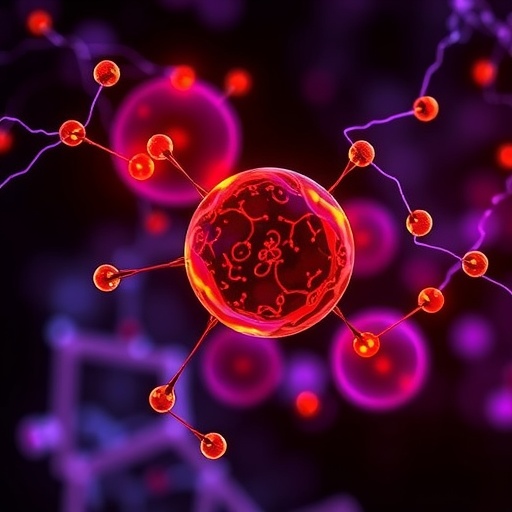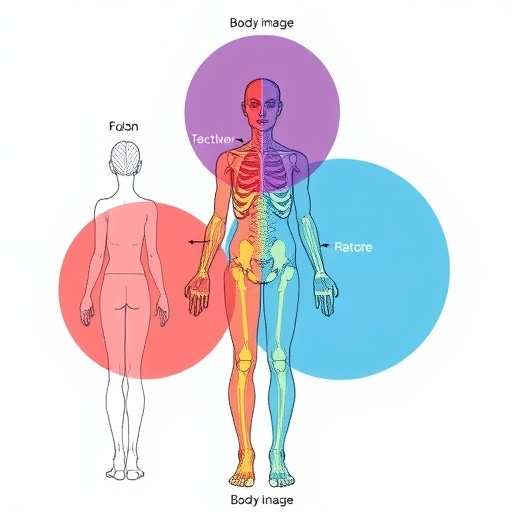In a groundbreaking study published in Nature Metabolism, researchers have uncovered a pivotal biochemical pathway that sheds new light on the metabolic dysfunctions associated with citrin deficiency. This rare genetic disorder, which impairs energy metabolism in the liver, has long puzzled scientists and clinicians due to its intricate clinical manifestations and elusive molecular etiology. The new findings reveal that glycerol-3-phosphate, a central metabolite in the glycolytic and lipogenic pathways, plays a critical role in driving the pathological changes observed in citrin deficiency by activating the carbohydrate-responsive element-binding protein (ChREBP), stimulating fibroblast growth factor 21 (FGF21) transcription, and enhancing lipogenesis.
Citrin deficiency, caused by mutations in the SLC25A13 gene encoding the mitochondrial aspartate-glutamate carrier, disrupts the malate-aspartate shuttle. This impairment has significant consequences for hepatic metabolic processes, particularly those involved in energy production and detoxification. Patients suffer from a spectrum of symptoms, including neonatal intrahepatic cholestasis, adult-onset type II citrullinemia, and fatty liver disease. Despite decades of research, the exact molecular pathways that link citrin dysfunction to metabolic abnormalities remained largely undefined, hindering the development of targeted therapies.
The current research delves into the metabolic alterations underlying citrin deficiency, focusing on the role of glycerol-3-phosphate as a signaling molecule rather than just an energy carrier. Glycerol-3-phosphate is commonly recognized for its function as a building block in triglyceride synthesis and its role in transferring electrons between cytosol and mitochondria. However, emerging evidence suggests that it may also modulate transcriptional programs involved in lipid metabolism and metabolic stress responses, positioning it as a metabolic nexus point in liver physiology and pathology.
Using a combination of sophisticated genetic models, biochemical assays, and transcriptomic analyses, the authors demonstrate that the accumulation of glycerol-3-phosphate in citrin-deficient hepatocytes results from disrupted mitochondrial transport and altered glycerolipid metabolism. Elevated glycerol-3-phosphate levels, in turn, activate ChREBP, a carbohydrate-sensitive transcription factor responsible for coordinating the expression of genes involved in glycolysis and lipogenesis. This activation triggers a metabolic cascade that exacerbates lipid accumulation in the liver, fueling the steatotic changes characteristic of citrin deficiency.
One of the most striking findings concerns the induction of FGF21 transcription by glycerol-3-phosphate-activated ChREBP. FGF21 is a hepatokine known for its hormonal roles in regulating energy homeostasis, insulin sensitivity, and lipid metabolism. While typically upregulated in metabolic stress and fasting states as an adaptive response, its persistent activation in citrin deficiency suggests a maladaptive aspect that may contribute to disease progression. The study carefully delineates how FGF21 expression is tightly linked to ChREBP activity, positioning it as a downstream effector in the glycerol-3-phosphate-driven transcriptional program.
By mapping the transcriptional landscape of citrin-deficient hepatocytes, the researchers identify a suite of lipogenic genes that become upregulated under the influence of glycerol-3-phosphate-induced ChREBP activity. These genes encode enzymes responsible for fatty acid synthesis, elongation, and desaturation, amplifying hepatic lipid synthesis and storage. This hyperactivation of lipogenesis not only explains the lipid accumulation seen clinically but also underscores the pathological feedback loops that sustain metabolic injury in the absence of functional citrin.
The mechanistic insights gleaned from this work challenge previous notions that citrin deficiency-associated steatosis results solely from impaired urea cycle dynamics and highlight the nuanced interplay between mitochondrial metabolite transport and nuclear gene expression. This paradigm shift opens new therapeutic avenues that target signaling metabolites and transcription factors rather than just correcting enzymatic deficits. Pharmacological modulation of the glycerol-3-phosphate-ChREBP-FGF21 axis presents a promising strategy for mitigating liver fat accumulation and restoring metabolic balance.
In addition to their in vitro and animal model studies, the investigators validate their findings by interrogating liver biopsies from patients with citrin deficiency. These clinical samples reveal consistent patterns of elevated glycerol-3-phosphate, activated ChREBP, and increased FGF21 expression, providing compelling translational relevance. Importantly, these molecular markers correlate with disease severity and liver fat content, supporting their utility as diagnostic biomarkers and therapeutic targets in personalized medicine approaches.
This research also raises intriguing questions about the broader roles of glycerol-3-phosphate in metabolic disease beyond citrin deficiency. Given the increasing prevalence of non-alcoholic fatty liver disease (NAFLD) and metabolic syndromes worldwide, understanding how glycerol-3-phosphate modulates hepatic transcriptional networks may uncover common pathogenic pathways. The findings thus resonate beyond a rare genetic disorder, offering potential insights into common metabolic challenges affecting millions globally.
The study’s methodology exemplifies the power of integrative omics and functional genomics in unraveling complex diseases. By combining metabolomics, transcriptomics, and genetic manipulation, the team paints a comprehensive picture of how a single metabolite can orchestrate cellular dysfunction through transcriptional reprogramming. This multidisciplinary approach sets a gold standard for future investigations into metabolic disorders and highlights the need to view metabolites not just as energy units but as active participants in regulatory networks.
Moreover, the characterization of ChREBP as a central node in metabolic gene control underscores its potential as a drug target. Inhibiting excessive ChREBP activation could dampen pathological lipogenesis and FGF21 overproduction, potentially halting or reversing liver damage in citrin deficiency. Several pharmaceutical companies are actively exploring small molecules that modulate ChREBP activity, fueled by findings such as these that clarify the transcription factor’s pathophysiological roles.
FGF21’s dualistic role as an adaptive hepatokine turned maladaptive effector invites caution when considering therapies aimed at modulating its levels. The nuanced balance between beneficial metabolic effects and chronic overstimulation necessitates precise targeting to avoid adverse consequences. Understanding the upstream signals such as glycerol-3-phosphate that drive FGF21 expression provides critical context for developing balanced treatment regimens.
In conclusion, this study elucidates a novel mechanistic axis centered on glycerol-3-phosphate, ChREBP activation, and FGF21 transcription that drives enhanced lipogenesis in citrin deficiency. By linking mitochondrial dysfunction to nuclear transcriptional programs, the researchers provide a cohesive framework that explains the metabolic derangements observed in this genetic disorder and open pathways for new therapeutic interventions. Their work exemplifies a paradigm shift in metabolic disease research, prioritizing the regulatory roles of metabolites that bridge cellular compartments to govern physiological and pathological states.
As the field moves forward, dissecting the interplay among metabolites, transcription factors, and hormonal signaling will be essential for translating molecular insights into clinical advances. The revelations presented here not only expand our understanding of citrin deficiency but also underscore the centrality of metabolic signaling metabolites like glycerol-3-phosphate in orchestrating complex cellular programs. This study marks a significant milestone in the quest to decipher metabolic diseases and highlights the promising horizon of metabolite-driven transcriptional regulation as a therapeutic frontier.
Subject of Research: Metabolic mechanisms and transcriptional regulation in citrin deficiency.
Article Title: Glycerol-3-phosphate activates ChREBP, FGF21 transcription and lipogenesis in citrin deficiency.
Article References:
Tiwari, V., Jin, B., Sun, O. et al. Glycerol-3-phosphate activates ChREBP, FGF21 transcription and lipogenesis in citrin deficiency. Nat Metab (2025). https://doi.org/10.1038/s42255-025-01399-3
Image Credits: AI Generated
DOI: https://doi.org/10.1038/s42255-025-01399-3
Tags: adult-onset type II citrullinemia symptomsbiochemical pathways in liver diseasecarbohydrate-responsive element-binding protein activationcitrin deficiency metabolic dysfunctionfatty liver disease mechanismsfibroblast growth factor 21 transcriptionglycerol-3-phosphate role in metabolismlipogenesis in liver disordersmetabolic alterations in rare genetic disordersneonatal intrahepatic cholestasis causesSLC25A13 gene mutationstargeted therapies for citrin deficiency





